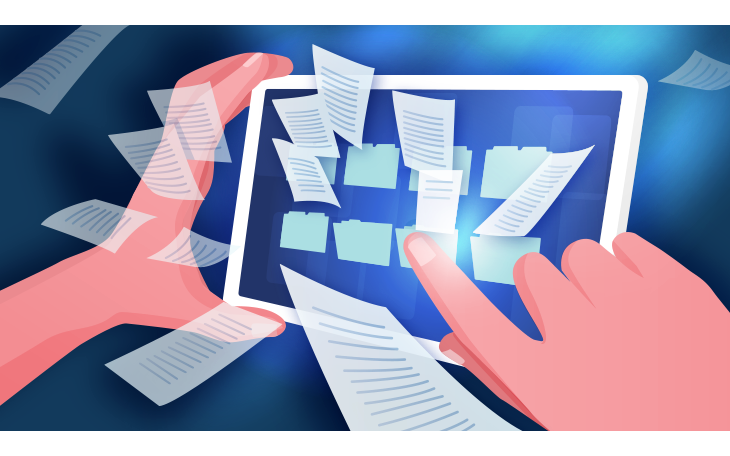Project Document Management
Solution

The management of multiple documents in an enterprise is chaotic, and it is difficult to find past documents for reference. Previous experience is a valuable asset of the enterprise, which can reduce the probability of employees making the same mistakes, and employees can also form core competitiveness from the accumulated experience. Document management used to be tedious and difficult due to the lack of technology, but today’s technology has solved this problem.
1. Treat project documents as data fields rather than files
In traditional project document management systems, documents are dumped into folders and subfolders somewhat "unceremoniously". However, in PM: Electronic Document Management, each document is uploaded to a designated media field. This makes it more likely that the document has a specified purpose and that you think about the specification before adding another document. Additionally, having fields representing specific types of documents can include these inline in related workflows.
It is important to remind the inspection responsible person to have them use the drawing in the context of the workflow. By including it as a media field in the inspection application, we can make it an integral step for every inspection - consistently.
2. Combine project hierarchy with document hierarchy
Another realization is the challenge of having two different hierarchies: one for managing projects and another for managing files in file-sharing systems such as  PPM Electronic Document Management. Having two separate hierarchies naturally creates extra work for the project manager. We decided that project documents needed to be seen not only as valuable data fields (media fields), but also linked to the project hierarchy. This way, it will be clear at a glance which document each project belongs to and where the project manager needs to go to update each document. This also gives us the new ability to allow subprojects to inherit certain standard documents from the parent project or department.
PPM Electronic Document Management. Having two separate hierarchies naturally creates extra work for the project manager. We decided that project documents needed to be seen not only as valuable data fields (media fields), but also linked to the project hierarchy. This way, it will be clear at a glance which document each project belongs to and where the project manager needs to go to update each document. This also gives us the new ability to allow subprojects to inherit certain standard documents from the parent project or department.
3. Standardize the file structure but allow flexibility at the project level
Since  PPM Electronic Document Management supports establishing a link between documents and the company hierarchy (departments, areas and projects), it is possible to create a standard document "list" that every project will inherit. Besides, the structure we designed allows us to add new media fields that represent documents specifically relevant to them to the standard document for individual regions or projects.
PPM Electronic Document Management supports establishing a link between documents and the company hierarchy (departments, areas and projects), it is possible to create a standard document "list" that every project will inherit. Besides, the structure we designed allows us to add new media fields that represent documents specifically relevant to them to the standard document for individual regions or projects.
4. Make documentation an inline part of the workflow
Accessing certain documents (e.g., product documentation) or uploading others (e.g., contracts) are essential steps in many workflows. When project personnel use  PPM to perform project workflow, they can reference or upload documents from the work page, without having to jump to the document management subsystem. As for the management (e.g., finance, legal) personnel of the organization, even if they are not members of any project, they can still see the documents related to their work (e.g., contracts) from
PPM to perform project workflow, they can reference or upload documents from the work page, without having to jump to the document management subsystem. As for the management (e.g., finance, legal) personnel of the organization, even if they are not members of any project, they can still see the documents related to their work (e.g., contracts) from  PPM Electronic Document Management for the permission granted.
PPM Electronic Document Management for the permission granted.
5. Conclusion
 PPM Electronic Document Management provides a powerful and flexible method for uploading, organizing, managing and distributing project documents and files. This approach is designed to overcome the main challenges and shortcomings that project managers face when using traditional folder-based project document management systems and tools.
PPM Electronic Document Management provides a powerful and flexible method for uploading, organizing, managing and distributing project documents and files. This approach is designed to overcome the main challenges and shortcomings that project managers face when using traditional folder-based project document management systems and tools.


















